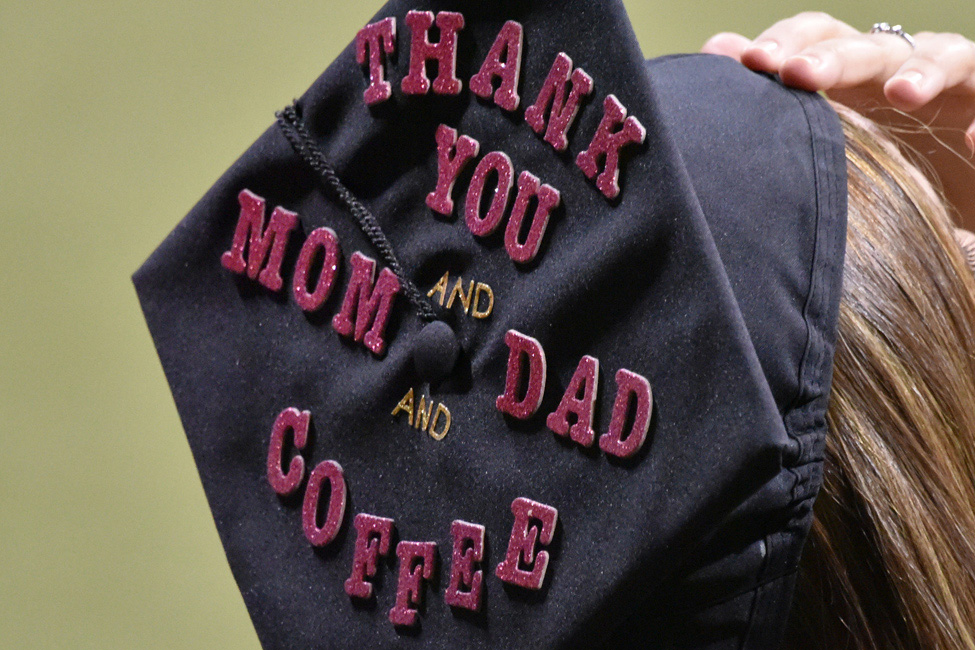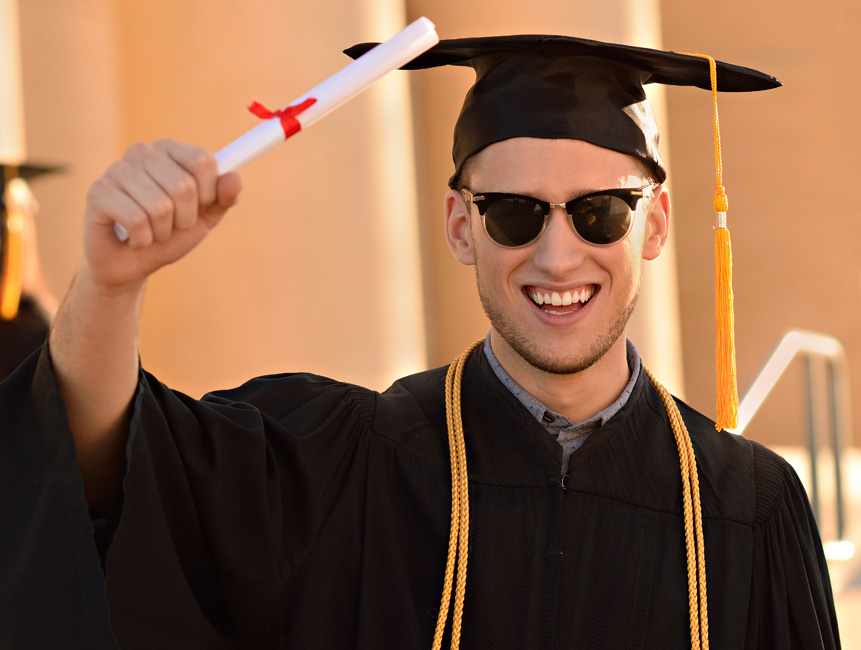20 Tips for Great Graduation Day Photos
Graduations are exciting events for young people graduating and moving on to a new chapter in their lives as well as for the proud moms and dads who have watched their children grow up. Not only do high schoolers and college kids have graduation ceremonies but nowadays even elementary kids and kindergarteners—even preschoolers—have ceremonies to mark their advancement to the next grade or level of schooling.
These events are wonderful photo opportunities to capture the exuberance of a teen or twenty-something ready to enter the business world. Photographs capture the joy and excitement of the day as well as the pride of family members who have watched the growth of a young woman or man over the course of their early years.
Just as exciting for new parents are the pre-k and elementary school graduations. Often the ceremonies for these youngsters include singing and a less formal celebration that marks their achievement.
While these graduation ceremonies may differ in the location—a classroom as opposed to an auditorium or gymnasium, or even outdoor location—there are many tips you can follow for great graduation photos. We’ve collected 20 tips to help you make sure your graduation day photos are an A+!
Tips for Great Graduation Day Photos
-
Get as close as possible. This will be easier the smaller the graduating class. Often at a high school or college graduation it is unlikely you’ll be up close to your graduate. Prepare by bringing a long telephoto lens. You’ll want at least a zoom with a telephoto reach of 200mm or 300mm.
-
Boost your ISO. Depending upon your camera, you may be able to significantly boost the ISO, allowing you to use a faster shutter speed, which will help ensure sharp photos.
-
During the ceremony you don’t want to have to bother with manual settings unless you know your camera well. Set the camera on program and let it do the thinking for you. You’ll get great photos and enjoy watching the graduation ceremony. Same for focus. If you have an autofocus lens, use it. If you don’t have an autofocus lens, you may want to borrow one for the day.
-
Unless you’re relatively close [read: in a classroom], don’t bother using a flash. The flash won’t reach your subjects so it won’t help the exposure and may drain your batteries.
-
Zoom in and fill the frame. Especially when your graduate is walking across the stage to receive his diploma, you’ll want to focus in on him. Getting a shot with the principal or dean handing him a diploma is a great shot. That’s not to say you shouldn’t grab a wide shot of the graduating class. You may not be able to make out many individual graduates in this type of shot but it helps tell the story of the day.
-
When shooting indoors, be aware of your white balance. Depending upon the location you may want to get to your seats a few minutes early to experiment with the best white balance setting, whether its auto or fluorescent or incandescent. Gymnasium lighting is sometimes filled with multiple types of light sources and could be more difficult to accurately white balance compared to lighting in an auditorium or classroom.
-
Similarly, if the ceremony is outdoors, depending upon whether its sunny out, overcast, or under a tent, you may want to arrive early enough to check and set your white balance. If its partially cloudy and the sun is going in and out of the cloud cover, you may find auto white balance will work best in this changing lighting condition.
-
Younger graduates often sing songs and this is a great opportunity for you to capture some video.
-
If you’re photographing a pre-k or kindergarten graduation ceremony, you may be in a classroom that has normal height ceilings so you might even be able to bounce your flash for a more flattering look as opposed to using the flash pointing directly at your graduate. Once you’re at your seat, take a few test shots to see what will work better.
-
Shoot candid images as well as more formal portraits or group photos.
-
Shoot close-ups of the cap, tassel and gown. You could do this at home.
-
Take a photo of your son or daughter all dressed up before they put on their cap and gown too.
-
For images of your graduate accepting their diploma, whether on stage or not, set the camera to continuous shooting so you can snap off as many photos as the camera will allow. The more frames you shoot the better chance you’ll have a great shot.
-
Often at the end of a graduation ceremony, the graduates will all toss their caps (mortarboards) in the air. Again, you’ll want to be on continuous shooting for this shot and snap as many frames as possible from the moment they begin to toss their caps.
-
Photograph your graduate with her friends. If you’re able to shoot these after the ceremony, have them hold up their diplomas.
-
If your graduate has a favorite teacher or professor, try to get a photo of her with your son or daughter. This might be easier with the younger ages than in high school or college where there are hundreds of graduates, so be patient.
-
Take portraits of your graduate with the school in the background. If you’re not so familiar with the school grounds, ask your graduate where interesting architecture can be found.
-
If it’s a bright sunny day, find a shady spot and add some fill-flash. The shade will provide more even lighting and the fill-flash will add a sparkle or catch-light to their eyes. You may need to lower the power on the flash for fill-flash. Take a test shot to make sure you’re happy with the exposure. Start at minus 1 f/stop.
-
Can’t find a nice secluded spot to take a formal portrait, use a fast lens or set an aperture as wide as the lens will allow. This will blur the background so your graduate will stand out more.
-
Remember to have someone take a photo of your young graduate and yourself beaming with pride too!










